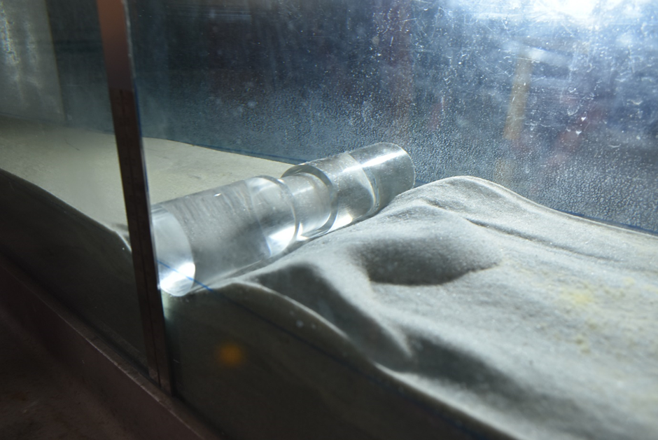Project Description
The STABLEpipe design guideline authored by UWA and published by DNV presents guidance on how to account for sediment mobility, scour and sedimentation in pipeline stability design. This guideline has been applied to offshore NWS pipeline engineering projects in recent years. A key learning from this guideline is that scour initiation points along the pipeline are critical for kick-starting the scour
process, leading ultimately to pipeline lowering and improved stability. For concrete coated trunklines, field joints present natural locations for the onset of scour given the locally reduced diameter. Consequently, the embedment conditions at field joints prior to extreme design storm conditions is of great importance to the behaviour of the pipeline during the design storm event. Understanding and being able to predict the as-laid embedment condition and subsequent changes under ambient/non-extreme conditions is therefore of great interest.
The research has shown that when the pipeline is lowered until the non-FJ sections touch down onto the seabed, the scour hole at the FJ remains open (as hypothesized). The confounding observation was that the same effect was observed for a plain pipe with no FJ feature. Even at significant far-field embedment, the presence of a small span was found to be self-cleaning, with winnowing of fine particles away from the scour hole leading to further stabilization of the coarse particles remaining under the scour hole.
The potential exists that this outcome helps to explain field-observed spans on mobile seabeds on deeply embedded pipes. It is also possible these effects reflect the limited width of the SOT and non-uniformity of flow across the test section.
It is therefore concluded that supporting large o-tube tests are required to confirm the observations, however, it does appear that there is potential value for better characterizing and modelling the behaviour of large trunklines such as Scarborough which are anticipated to experience modest increases in far-field embedment due to ambient currents, and where FJs form an important remnant scour initiation feature to assist in self-lowering during the passage of the design storm event.

